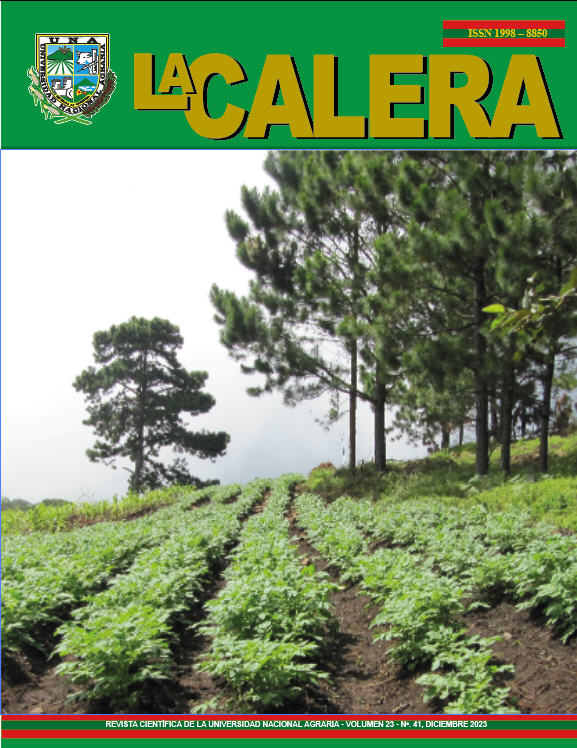Aporte económico de los equinos de trabajo en la producción de cacao en dos comunidades de Waslala, Región Autónoma de la Costa Caribe Norte, octubre 2021 a marzo 2022
DOI:
https://doi.org/10.5377/calera.v23i41.16742Palabras clave:
ingreso agrícola, fuerza de trabajo animal, desarrollo rural, bienestar animal, medios de vidas, contribución económicaResumen
La presencia y participación de los equinos en diversas actividades económicas, sociales y culturales es destacable en el desarrollo de unidades de producción cacaoteras y otros ámbitos. Es fundamental cuantificar su relevancia económica y papel en los medios de vida de las familias productoras de cacao. En este estudio, se encuestaron 31 productores miembros de la Cooperativa Nueva Waslala, pertenecientes a las comunidades de Ceiba Dudú y Dipina. La información obtenida permitió cuantificar el ahorro en la fuerza laboral de las familias y la contribución del trabajo realizado por los equinos durante el último ciclo de producción de cacao, que abarcó de octubre de 2 021 a marzo de 2 022. El enfoque de investigación fue cuantitativo y descriptivo, utilizando una muestra no probabilística por conveniencia. Los resultados señalaron que las tareas de producción de cacao que más dependen de la fuerza de los equinos son la recolección del fruto y el transporte de la producción desde el hogar hasta el centro de acopio, donde el 86% de los propietarios se apoya en estos animales para realizar dichas actividades. En consecuencia, se estima que el ahorro en costos de producción de cacao, debido a la existencia de al menos un equino de trabajo en cada hogar, es de aproximadamente USD 305.03 durante el período de cosecha del cultivo. Además, cada equino contribuye al ahorro de unos 212.8 días de trabajo por año para su propietario. Estos hallazgos documentan la importancia de la presencia de los equinos y su bienestar en la sostenibilidad de los medios de vida de las familias productoras de cacao que cuentan con estos animales.
Descargas
388
EPUB 114
PDF 106
Publicado
Cómo citar
Número
Sección
Licencia
Derechos de autor 2023 Universidad Nacional Agraria

Esta obra está bajo una licencia internacional Creative Commons Atribución-NoComercial-CompartirIgual 4.0.

